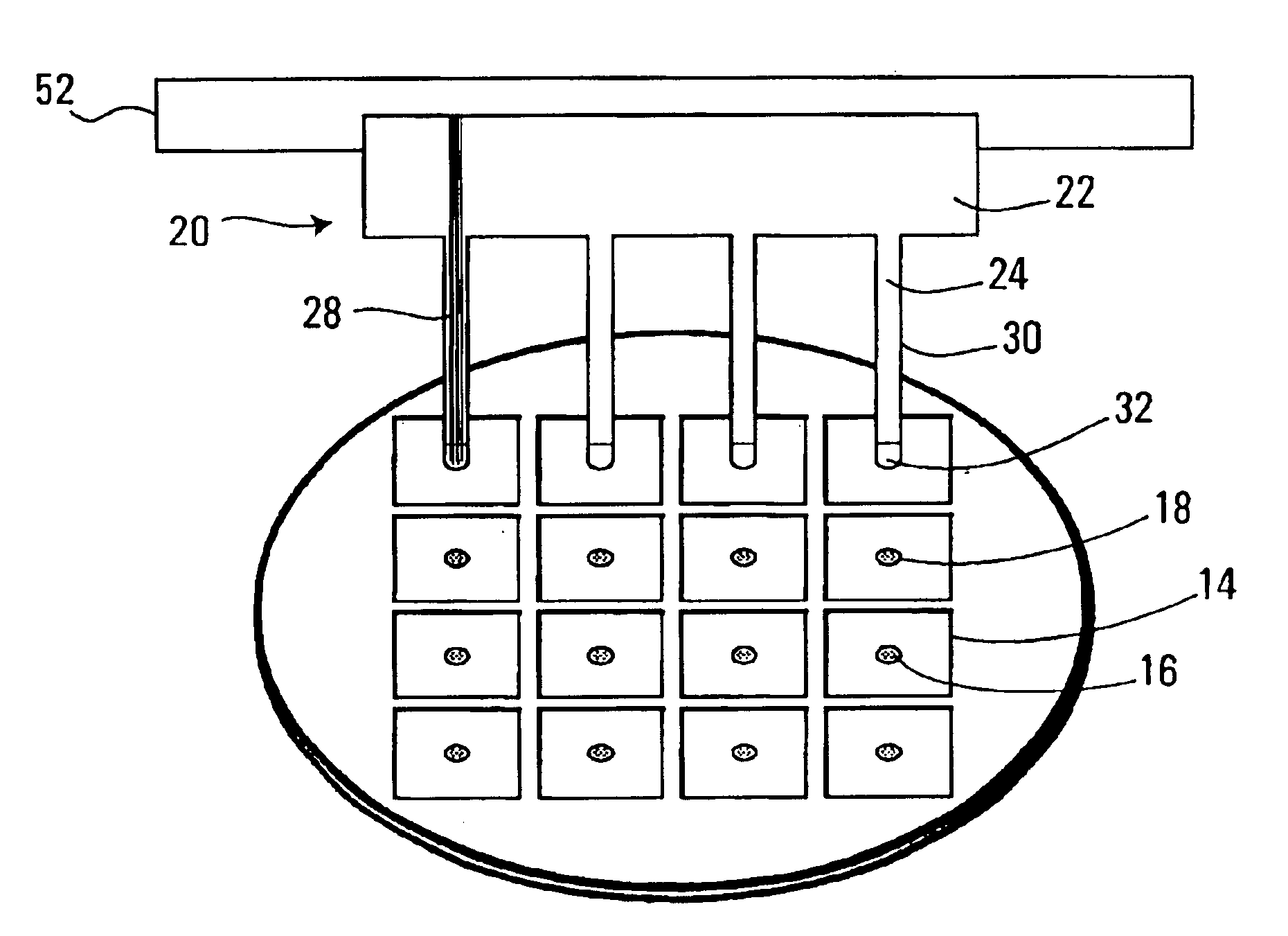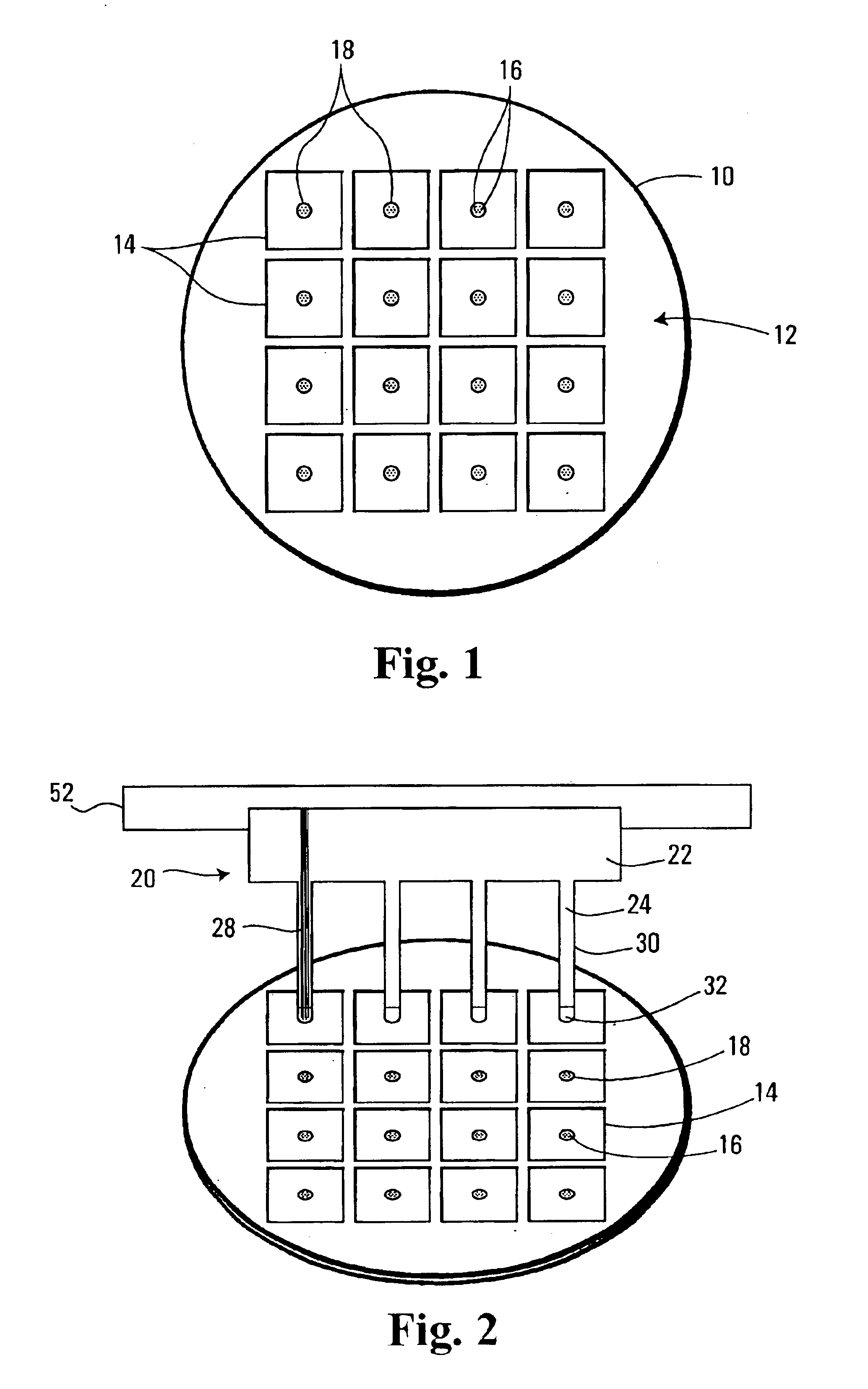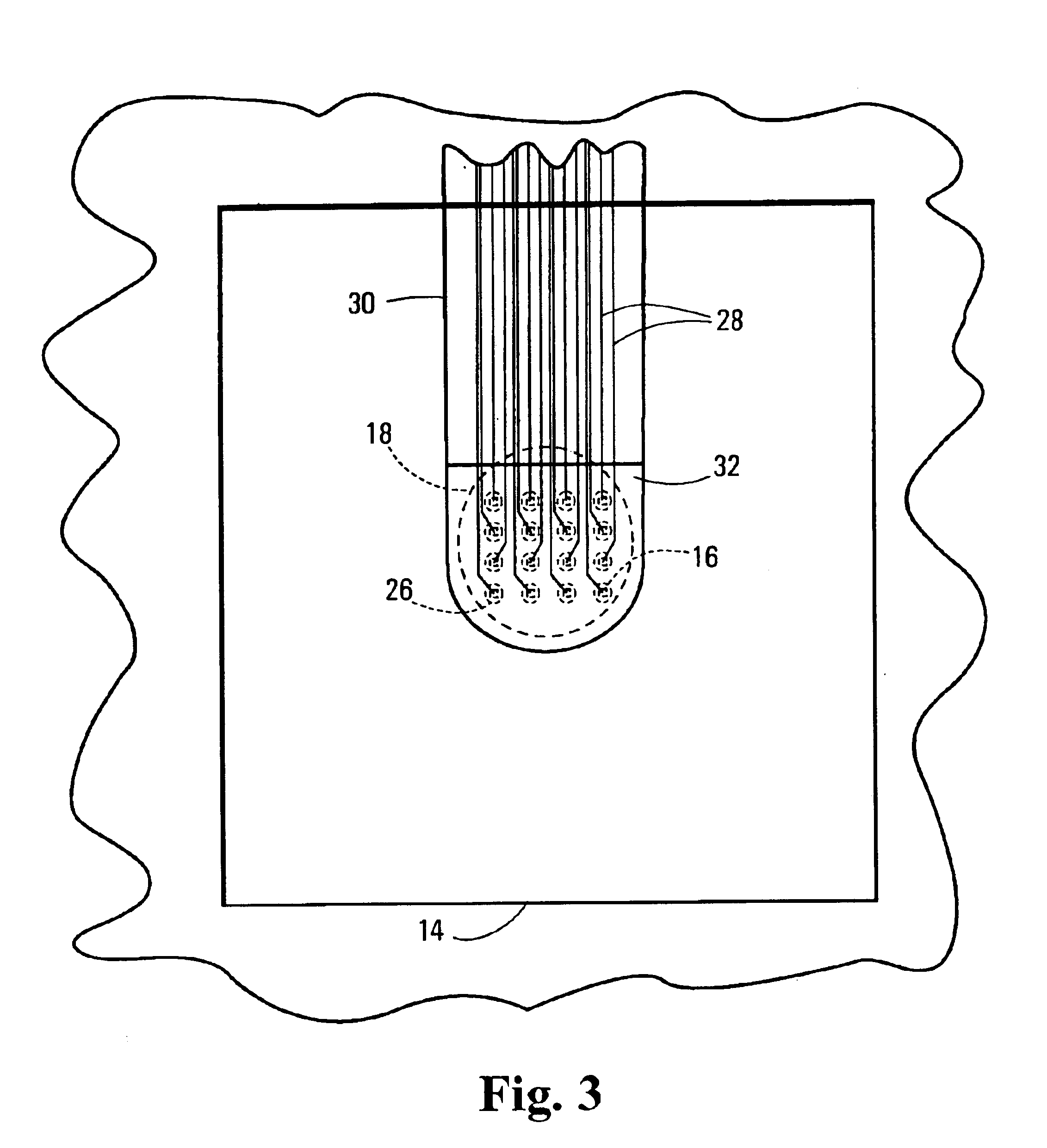Flexible connecting device for interfacing with a wafer
- Summary
- Abstract
- Description
- Claims
- Application Information
AI Technical Summary
Benefits of technology
Problems solved by technology
Method used
Image
Examples
first embodiment
FIG. 2 shows a connecting device 20 in accordance with the present invention connected to semiconductor wafer 10. Connecting device 20 is adapted to connect the signal transmissive connector elements 16 located on wafer 10 to external devices such as terminal block 52, that in turn connects integrated circuit 12 to external circuitry (not shown). Connecting device 20 includes a base element 22 and a series of fingers 24. Each finger 24 comprises a finger body 30 and a fingertip 32. In the embodiment shown in FIG. 2, connecting device 20 includes a row of fingers 24 connected to a row of clusters 18, where each cluster 18 belongs to a respective functional module 14 in a row of functional modules.
FIG. 3 is an expanded view of, fingertip 32 connected to a cluster 18 located within functional module 14. Although only one fingertip 32 is shown in FIG. 3, each fingertip 32 includes a group of signal transmissive connector members 26 for connection to signal transmissive connector element...
second embodiment
FIG. 6 is a top perspective view of a connecting device 42 in accordance with the present invention. Connecting device 42 includes a base element 44, and a long flexible band 34. Situated on band 34 are connector zones 38 and bowed flexible portions 36 that join connector zones 38.
Each connector zone 38 includes a group of signal transmissive connector members (not shown) for connecting to a corresponding cluster 18 of signal transmissive connector elements 16 on the surface of wafer 10. As discussed earlier in connection with the first embodiment the signal transmissive connector members within each group are arranged in a predetermined disposition that matches the disposition of the signal transmissive connector elements 16 in corresponding clusters 18. In this manner, when the connector zones 38 are placed over corresponding functional modules in a row of functional modules, the signal transmissive connector members in each group mate with their respective signal transmissive con...
third embodiment
FIG. 10 illustrates a connecting device 56 in accordance with the present invention, positioned above a wafer 52. Wafer 52 includes a planar surface with a plurality of functional modules 51 positioned thereon. Each functional module 51 includes an optical signal transmissive connector element 54 that is capable of transmitting and receiving optical signals. In the specific embodiment shown, optical signal transmissive connector elements 54 are shaped as conical recesses that extend into the surface of wafer 52. Each functional module 51 includes circuitry such as a wavelength filter and a wavelength converter, and an optical / electric converter for converting optical signals to electrical signals and vice versa. Circuitry for converting optical signals to electrical signals is known in the art, and will not be discussed in more detail herein. It should be understood that as wafer 52 expands and contracts under thermal effects, the distance between each optical signal transmissive co...
PUM
 Login to View More
Login to View More Abstract
Description
Claims
Application Information
 Login to View More
Login to View More - R&D
- Intellectual Property
- Life Sciences
- Materials
- Tech Scout
- Unparalleled Data Quality
- Higher Quality Content
- 60% Fewer Hallucinations
Browse by: Latest US Patents, China's latest patents, Technical Efficacy Thesaurus, Application Domain, Technology Topic, Popular Technical Reports.
© 2025 PatSnap. All rights reserved.Legal|Privacy policy|Modern Slavery Act Transparency Statement|Sitemap|About US| Contact US: help@patsnap.com



